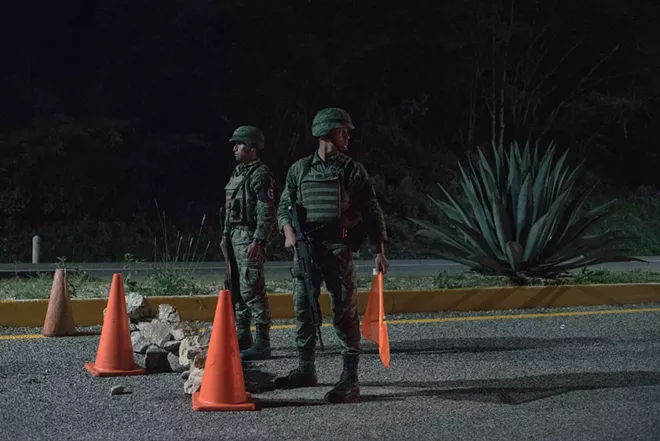
Luis Antonio Rojas/The New York Times
Soldiers working with Mexico’s National Guard at an immigration checkpoint in Comitán de Domínguez, Mexico, June 15, 2019. Increased enforcement along the border with Guatemala, which began in recent days, has made crossing into Mexico harder. This has dissuaded migrants from traveling north.
By Maya Averbuch and Kirk Semple
New York Times News Service
NENTÓN, Guatemala — The Aguilar family had been preparing since February to migrate north. They borrowed $2,600, made a down payment to a smuggler and set off from their home in northern Guatemala last week.
But at Guatemala’s border with Mexico, their smuggler had some bad news: crossing into Mexico was too risky. A June 7 deal between Mexican authorities and the United States to reduce migration had brought extra security forces to the border.
So far, Mexico’s mobilization of its security forces has fallen short of the dramatic show of force that the government promised, with apparently only a fraction of the stipulated 6,000 National Guard members now operating in southern Mexico.
Still, the deployment has already disrupted the usual flow of people and commerce passing over this historically porous border and sown fear among migrants and their smugglers alike.
“We don’t know anything, whether this is a definitive change, or just for some time,” said Juan Alberto Aguilar, 27, who was traveling with his wife and their 3-year-old daughter. The family sat in the central square of Nentón, a village near the Guatemala-Mexico border, waiting for the van that would take them home.
The deployment plan is part of a deal between the administration of President Andrés Manuel López Obrador of Mexico and the U.S. government to thwart President Donald Trump’s threats of potentially crippling tariffs.
On Thursday, Trump praised the Mexican president for his early efforts.
“The flow has very substantially slowed down,” Trump said. “It’s already had a big impact.”
In Ciudad Hidalgo, a bustling market town in Mexico near the southwestern end of the border, vendors say they have seen a significant falloff in business in the past two weeks. Most of their clients are Guatemalans who avoid paying duty on their purchases by returning illegally to Guatemala on rafts that ply the Suchiate River, which demarcates that section of the border.
Immigrants’ advocates anticipated the increasing presence of security forces would continue to drive down the number of people trying to migrate north, but they expected that in time, the flows would rebound, perhaps through more remote and dangerous migratory pathways.
